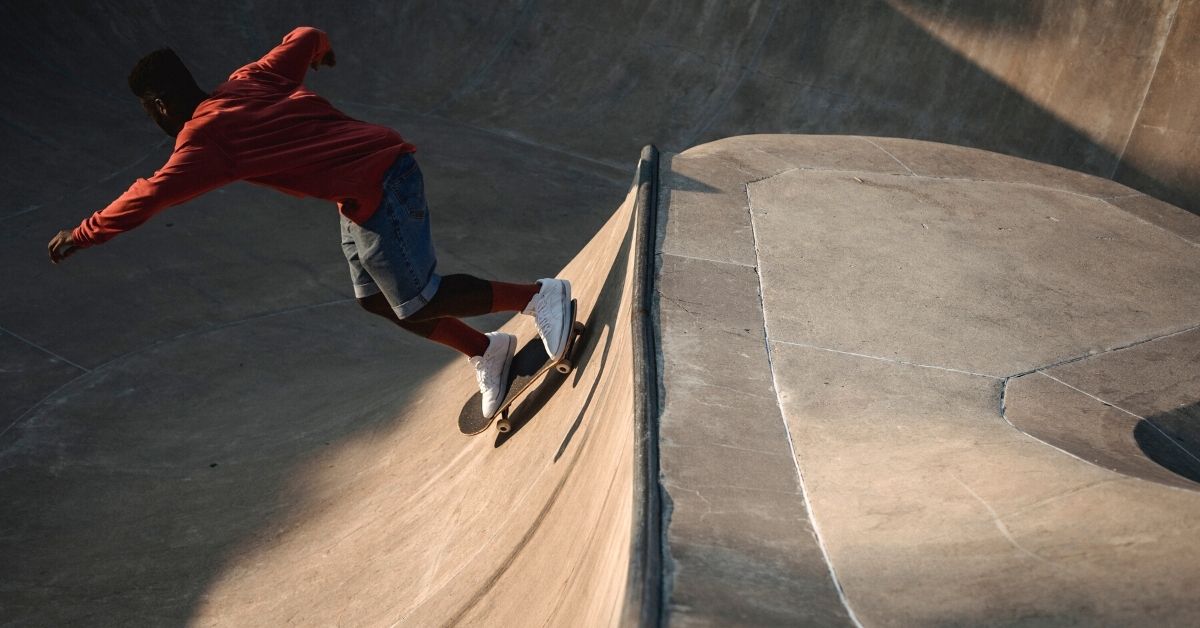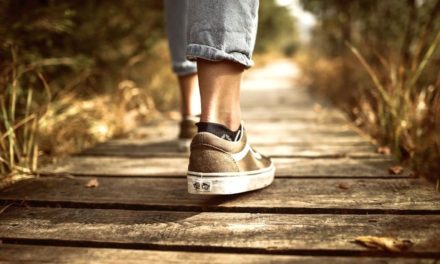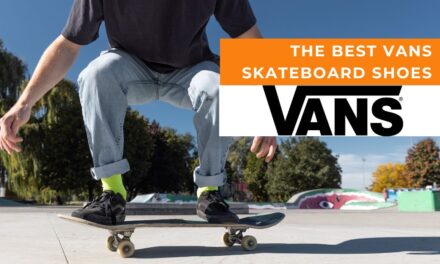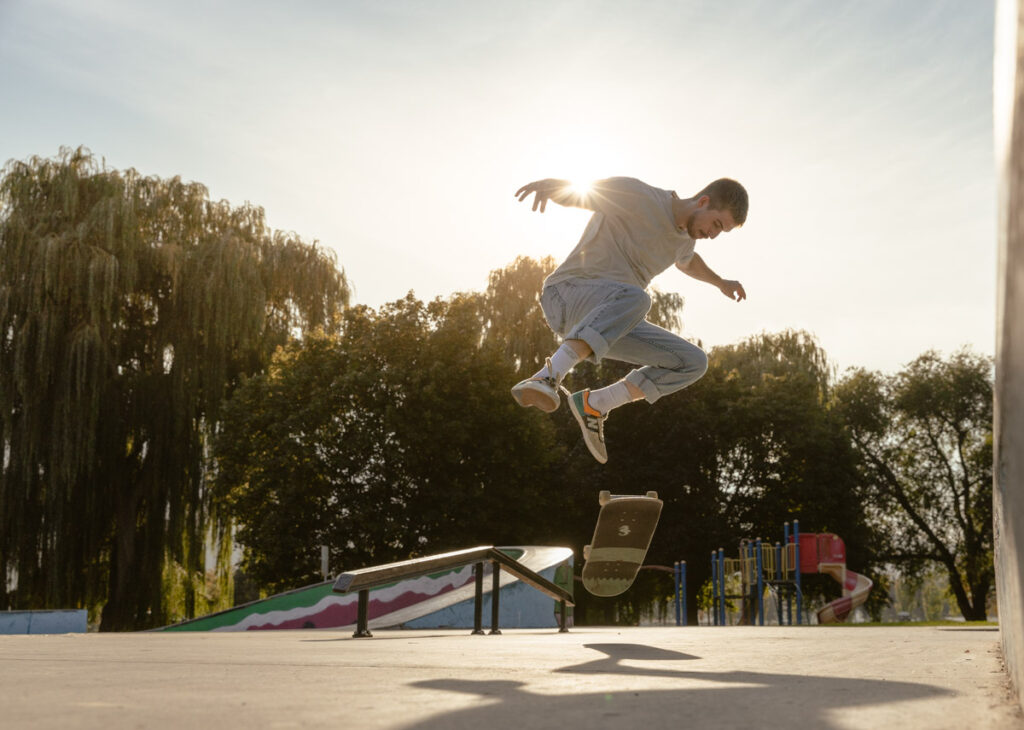When I used to teach skateboarding camps, one of the most common questions I’d hear was whether or not skateboarding is hard to learn. Although it certainly can be challenging, there are ways to make the learning process enjoyable, motivating, and safe.
I remember getting into skateboarding as a kid after watching a movie where someone skated on a mega ramp. I couldn’t think of anything that could be more fun. Plus, that skater in the movie (Bob Burnquist) made it look so easy, so therefore it must be!
As it turned out, it was much harder than my 10-year-old self expected, and I still cannot skate a mega ramp.
Now although skating at a pro-level might be a bit out of reach right now, learning how to shred your local skatepark, cruise around town, or session a street spot is possible for anyone at any age.
And with the tips I’m going to break down throughout this post, you’ll learn exactly how that’s possible.
Is Skateboarding Hard To Learn?
Learning how to skateboard isn’t hard if you focus on the basics, such as balancing and riding, rather than trying to do difficult tricks early on. Once you have the basics, building off these skills to learn advanced tricks feels more manageable and less overwhelming.
As tempting as it is, learning how to ollie, kickflip, or skate a bowl isn’t the most efficient way of learning to skateboard. You see, everything in skateboarding is based around the fundamental skills of balancing, pushing, and riding your board. Without these skills down first, everything else in skateboarding will feel exceptionally difficult.
Regardless of whether you’re 10 years old or 50 years old, the same premise applies. The barrier to entry in skateboarding is being able to ride one, and it’s equally tricky no matter what age you’re at.
With that said, learning how to ride a skateboard isn’t as impossible as it seems when you first step foot on one. You will be surprised by how quickly you adapt and improve as you spend more time riding your skateboard. To offer a little more of a game plan, let’s get into some tips that will make learning to skateboard a lot easier.
12 Tips To Learn Skateboarding In Less Time
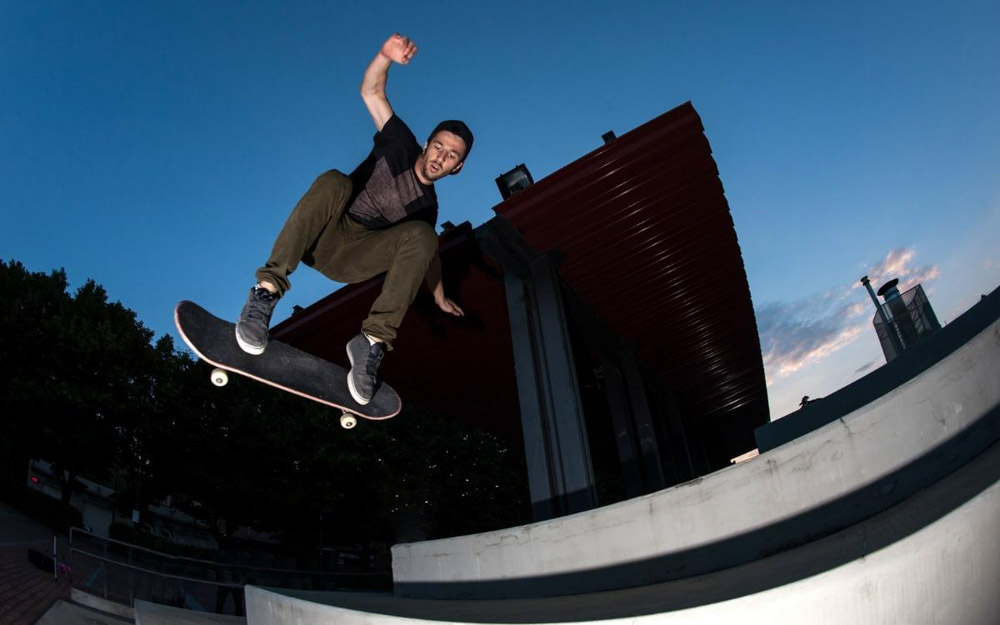
1. Start With The Absolute Basics
Think of skateboarding as building a house. If the foundation isn’t strong, the rest of the house is going to crumble. Without the confidence to balance, push, and turn on your board, everything else is going to feel impossible.
Luckily there are a few easy things you can do to learn these basic skills.
If you still don’t feel comfortable standing on the board, place it on a flat surface and stand on it without moving. Wiggle your feet back and forth to get a feeling of the trucks moving too. This side-to-side movement can throw the balance off for many people, so make sure to keep your knees bent and adjust your body to counteract the board’s movements.
Once this feels comfortable, shift your feet horizontally to wiggle the board forward and back. This will cause the wheels to roll slightly in either direction and give you a taste of how it feels to have the board move under your feet.
At first, this will feel super foreign, but after doing this a few times, these basic motions of the board will feel normal and easy to balance on.
From there, begin learning how to push and balance on your board. Having tight trucks will make the board feel more steady and build your confidence to make this easier. Once again, practice on a flat smooth surface, so you don’t pick up speed as you go. Starting with small pushes is all you need at first; you can try to go faster later on once you don’t need to focus on your balance as much.
Once you have the basics of balance and pushing down, begin turning your board by pressing down on the tail, or leaning to one side or the other. A way to make this more fun is to set up a short slalom course for yourself with cones (or even rocks if that’s all you have).
With these basic skills down, begin learning how to roll down small hills and practice pushing around town. You could ride your skateboard to work or school to get a little extra mileage too.
2. Practice Often
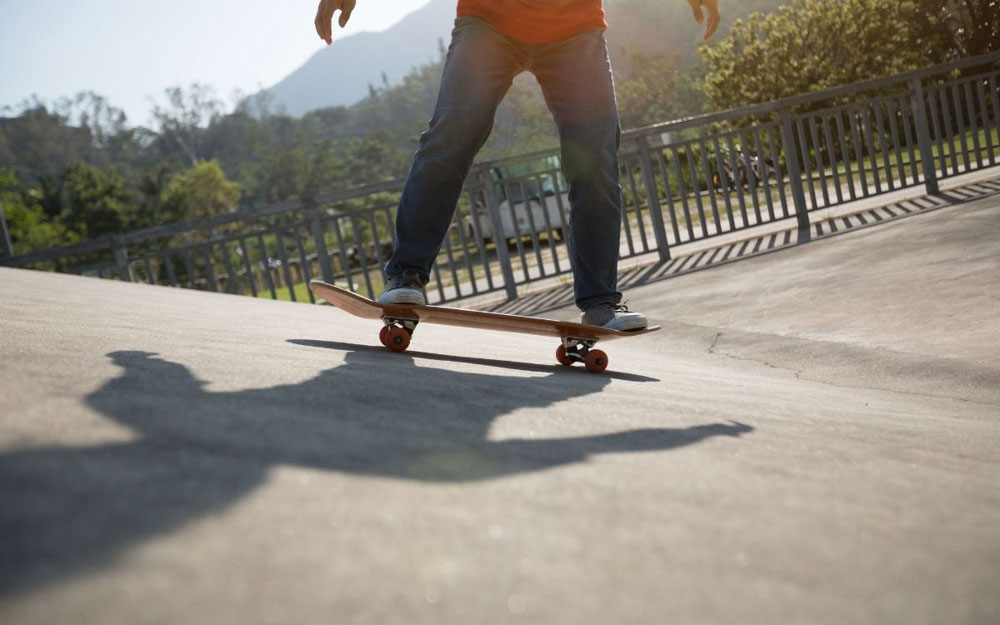
After you have the basics, practice is the next most important thing. Without spending time on your board, you can’t expect to get any better. This also includes taking long breaks away from skating, as that can impact your progress in the beginning.
Once you learn something new or begin feeling confident riding your board, try to repeat that same thing until it feels so easy you could do it with your eyes closed. Even if you feel accomplished after getting something right the first time, continue to do it until it is second nature.
Whether you’re doing a new trick or just learning to ride a skateboard, practice is the most important ingredient in this process. Without it, you’ll find nothing gets any easier and start to feel pretty unmotivated to skate.
3. Slowly Build Your Skills Off Of Existing Ones
While getting more and more practice in, you’ll inevitably improve. As you start looking for bigger and better things, it’s important to try building your skills sequentially. To give you an example of what I am talking about, here’s a basic example of ollie progression:
- Learn how to ollie while stationary
- Learn how to ollie while moving slowly
- Learn how to ollie while moving faster
- Learn how to ollie over a small object (ie. a stick)
- Learn how to ollie off a small drop (ie. a curb)
- Learn how to ollie a 2 stair
- Learn how to ollie a 3 stair
And so on.
In that example, each step is one step harder than the last. From step 1 to step 7, it gets exponentially more difficult, but the steps in between acted as building blocks to make it all possible.
Now depending on where you’re at, doing an ollie might already be easy, or it might seem totally impossible; and that’s ok. What you need to do instead is consider what skill you currently are learning and what the next step up from that skill would be.
To give you some more examples, if you just learned how to ride your skateboard comfortably, the next step would be learning how to manual.
If you just learned how to roll up and down a steep bank, your next step could be rolling up and down a small quarter pipe.
Although the next step is slightly more difficult in both these instances, it’s not unachievable with your current skills. Making progressive and attainable goals for yourself will help keep you motivated and make the learning process feel less difficult.
4. Use A Proper Skateboard Setup
When you first start skateboarding, you probably don’t recognize the difference between a cheap Walmart board and a board from a proper skate shop. If you are serious about learning to skateboard, getting a good setup is going to be crucial. With higher quality components, these skateboards feel more secure to ride and are less prone to breaking.
For example, a lot of cheap-low quality skateboards will come with plastic trucks. These trucks can easily crack or bend over time and begin causing a lot of problems. This can be straight-up unsafe, especially as you start to learn more advanced tricks and are riding your board at higher speeds. With a proper skateboard setup, you get used to the feeling of a concave deck and how a real skateboard should perform.
What I would recommend is going into your local skate shop and buying a complete. These skateboards are much higher quality than a cheap toy deck but are still relatively affordable compared to building a setup from scratch.
5. Make Sure To Use The Right Footwear
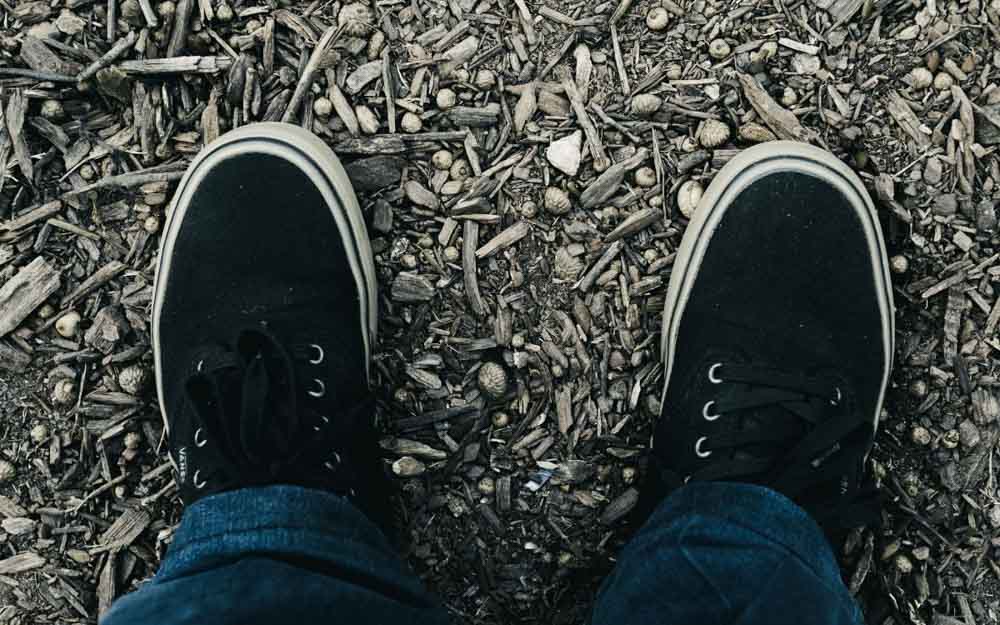
When you think of skateboarding, you might think you’d want well-cushioned and supportive footwear. So perhaps running shoes come to mind as an ideal choice.
Unfortunately, that’s one of the worst things you can skateboard in, and not using the right footwear while learning can hinder your results.
Skate shoes have a completely flat sole and are much thinner than athletic footwear. What this offers is a better board feel and added traction against the grip tape. Not to mention, they’re made of more durable materials such as suede that holds up when sliding along your grip tape.
This type of sole helps you feel more connected to the board and makes balancing easier too. I like to think of it as trying to balance with one leg on cement vs a memory foam mattress. The cement will be much easier to balance on since your foot has solid contact with the ground and never moves. Meanwhile, the memory foam can cause your foot to move as it absorbs your weight, making it harder to balance.
With that said, this isn’t to say skate shoes aren’t protective and well padded. They just offer a much different feel than a running shoe that’s more optimal for skateboarding. To help you find the right pair of shoes, check out this guide to the 24 best skateboarding shoes.
6. Practice Falling & Don’t Be Afraid Of It
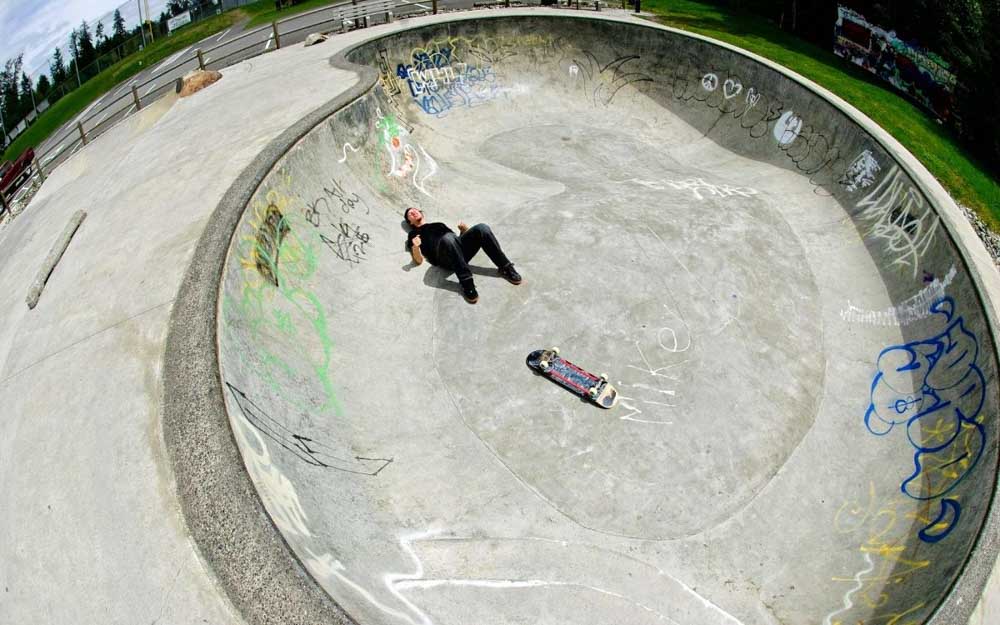
Falling is a part of skateboarding, whether you like it or not, and being afraid of it can limit how quickly you learn. Although falling can undoubtedly suck, there are ways to make falling a lot less terrible.
The first thing is to try to roll out of your falls rather than stop them. I always find that when I try to stop myself when I fall, my leg can get put in a weird spot, my wrist gets landed on funny, and it’s just not ideal. Compare that to rolling out of a fall, your limbs are kept safe, and you usually roll onto your back without much of an issue.
Admittedly, this is not always possible if a fall takes you by surprise, but if you practice this, it will become second nature with most of your tumbles.
To learn this safely, find a nice patch of grass and pretend to fall forward as if off your skateboard. Aim to avoid sticking your arms out, and try to roll off your back onto your feet. Try this a few times until it starts becoming an automatic reaction. That way, when you do take a spill while skating, you’ll be less likely to get injured by rolling out of it.
7. Find A Friend To Skate With
Skateboarding is equally challenging to learn, whether alone or with a friend, but learning with a friend sure makes it more fun. If you know someone who skates, try to meet up with them whenever you can for both enjoyment and motivational factors. Skating with a friend will help motivate you to try something new or just have someone to share your excitement with when you land a trick.
If you don’t have anyone to skate with, don’t be afraid to go to your local skatepark and start making some friends. Most skaters are super friendly and happy to help if you have any questions. Best of all, there’s always someone at the skatepark, so it’s not like you need to find matching schedules with someone!
8. Take Videos Of Yourself Skateboarding
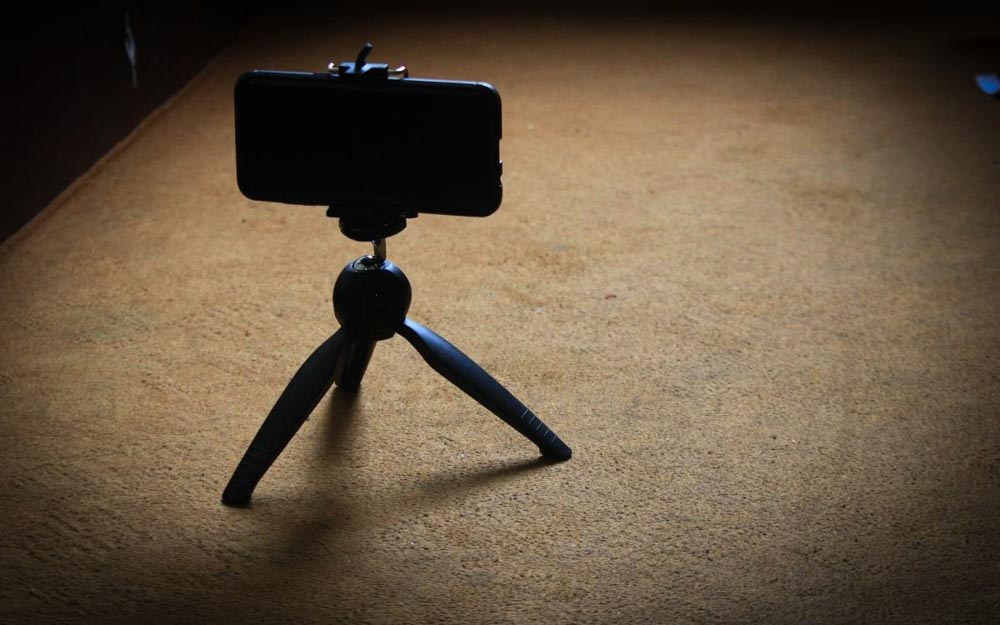
Even if it’s your very first day riding a skateboard, taking videos of yourself makes it easy to spot things you could improve on in ways you wouldn’t see otherwise. I’m not sure what it is, but seeing yourself in third person can make any flaws in your skating immediately obvious. Even if it’s something as small as your body positioning or the way you pop a trick.
Filming myself has been a huge help in the past while I’m trying to learn something new, and I still do it constantly when I’m stuck in my progression.
You might feel self-conscious about this at first, but just remember it’s only for you to see. It doesn’t have to get shared anywhere and only needs to be used for your personal shred studies.
However, if you do end up landing a sweet trick while you’re recording yourself, now you have proof to share with your friends.
9. Watch Skateboarding Video Parts & Movies
A big part of learning to skateboard is staying motivated and remembering why you’re doing this. Watching skate videos on Youtube or skate movies on Redbull TV or Netflix is a great way to stay fired up about what you’re learning.
And when you’re excited, all the practice doesn’t seem like work anymore.
Another advantage to watching skate videos is to see how other skaters do things. The way someone chooses a line, pops a trick, or carries themselves while they skate can open your mind to new ideas in your skateboarding.
If you haven’t already subscribed to the Thrasher Youtube Channel, that’s one of the best places for free skate content that’s seriously mind-blowing.
10. Try Wearing Protective Gear
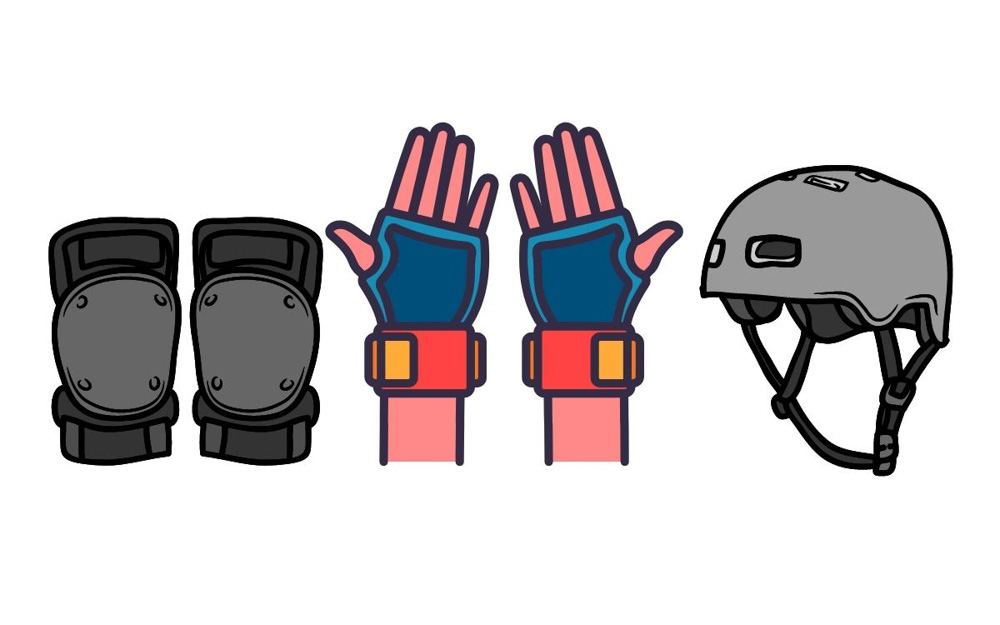
Fear of falling and hurting yourself is a very common fear when learning how to skateboard. That’s why wearing protective equipment like a helmet, wrist guards, elbow pads, and knee pads can give you a confidence boost through safety.
I still find myself padding up for new tricks that scare me just because it offers some peace of mind if I do fall.
Particularly if you feel like your fear is holding you back from learning to skateboard, padding up is one of the best ways to make this entire process easier.
11. Choose The Right Place To Skate
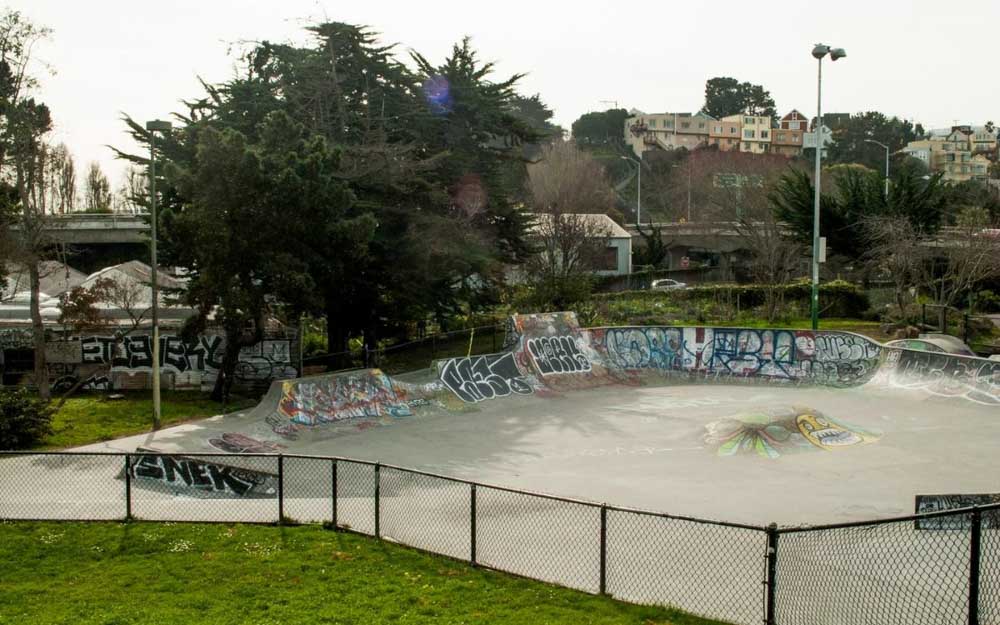
As you begin to practice more, choosing the right place to skate is important. Ideally, you want to find a place that’s flat, quiet, and comfortable for you to hang out at when you first start.
There’s nothing worse than trying to learn something while you constantly feel like you’re being watched or judged. With a place you feel comfortable in, you can focus on skateboarding and not what’s going on around you.
If you live on a quiet street, that can be a great place to start. However, opting for a smoother surface like a basketball court or skatepark can be more ideal. Since public parks can get busy midday or on the weekends, try to get out earlier in the morning when fewer people are around. That way, you can practice in peace before anyone even gets there!
12. Set Goals For Yourself
The last tip to help you learn skateboarding faster is to set goals. After you get a bit of mileage in on your skateboard, see what types of things interest you. Maybe it’s bombing hills, riding a bowl, doing flat ground, or skating stairs. Whatever it is, set something as your goal and break down the steps required to get there.
Similar to what I mentioned in tip #3, breaking down what you want to accomplish into individual parts will make achieving that goal a lot easier.
As you continue to skate, your goals will change, but what matters most is that you’re working towards something. Without that motivation, it’s hard to feel like you’re making any progress, and it’s a lot less exciting as you check off new milestones in your skateboarding.
So although skateboarding can be hard to learn, you can do it faster by focusing on the basics and building your foundation first. Rather than try to kickflip your first day, get comfortable pushing, balancing, and going fast before doing anything more complicated. The time it takes to learn will vary depending on how much time you have to practice, but as long as you stick with it, skateboarding does get easier; and more fun!
If you’re left wondering what kind of timeline you could be looking at to learn skateboarding as a beginner, check out this article about how long it takes to get good at skateboarding here.
Happy Shredding!
Brendan 🙂

